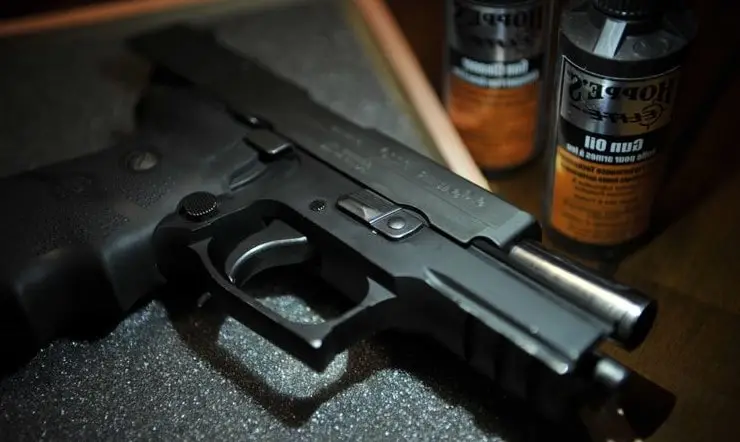How to Open a Combination Padlock

Combination padlocks are extremely common locks used to secure lockers, gates, storage units, and other personal belongings that require a password-like numeric combination to open. We all likely remember struggling how to open a combination padlock on our school lockers, or not being able to access something secured by one after forgetting the sequence or passcode.
Fortunately, while combination padlocks may seem permanently locked if you don’t have the code, there are a number of tricks you can use to unlock and open them through logical decoding or forced entry. Depending on the type of combination lock, you may also be able to easily reset or override it to set a new numeric sequence.
In this comprehensive guide, we’ll cover multiple methods, techniques, tools, and step-by-step instructions for cracking and opening three major types of combination padlocks:
- Standard combination locks – The classic spin dial locks on lockers
- Resettable combination locks – Allow setting your own code
- Electronic combination locks – Digitally locked with keypads or fingerprint sensors
Standard Combination Lock Opening Methods
Standard combination locks with 3 digit dials and numeric codes are likely the most common padlock type used for lockers, storage units, equipment cases, and other security needs. They can prove frustrating when the preset factory combinations are lost, or you need to unlock one that has an unknown code.
Luckily there are two primary methods for cracking open a standard spin dial combination lock without needing to break it apart through destructive forced entry.
We’ll cover:
- Hunt-and-Peck Approach
- Mathematical Lock Decoding
Understanding these main techniques, along with knowing factory default combos common on certain combination lock models, will allow you to decode and access most standard locks.
Hunt-and-Peck Combination Cracking
This method involves systematically trying all feasible combinations:
- Test numbered sequences in order from 000 to 999
- Can also try combinations randomly
- Write down or remember tested combos
- Average attempt rate to open is 125
While tedious, given a 3 number lock has at most 1,000 possibilities, hunt-and-peck decoding through all permutations one by one will eventually unlock it.
You can streamline combinations tried:
- Start or end sequence based on lock orientation upon closure
- Try likely combos first – many defaults are preset combos (i.e. factory codes)
So if needing to crack a combination lock without any clue of the digits, hunt-and-peck solving can effectively brute force the solution.
Mathematical Combination Lock Decoding
Rather than guessing blindly, you can use formulas and mathematical techniques to reveal combination codes based on how the locker lock wheels interact to align to the proper opening sequence.
This leverages the mechanical architecture inside standard combination padlocks, using physics to determine the digit sequence. By precisely turning each dial and reading tactile and auditory feedback from device components, you can deduce the right combo.
Key steps in mathematical decoding involve:
Determine dial spacing
- Measure spaces between numbers
- Allows calculating digits based on wheel spacing
Read initial dial alignment
- Dial position when lock is closed
- First number(s) of sequence
Decode first wheel digits
- Set dial to align marker points
- Turn dial in opposite direction numbers
Decode middle wheel digits
- Repeat process based on wheel spacing
- May take precision and practice
Decode final number sequence
- Apply previous steps to last wheel
- Test combo found to open lock
Essentially, combination locks click and shift based on the spacing, notches, and rotation of their internal wheels. Through careful handling, you can identify the positions needed to enable their unlocking sequence.
This takes time and focus compared to guessing combinations at random. But the methodical nature of decoding based on tactile and auditory feedback allows uncovering combo codes without needing to input hundreds of permutations blindly.
Those adept at mathematical decoding – using measurements, precise turns, and reading mechanical sensations of the lock components to derive positional data – have mastered the art of cracking combination padlocks. It takes patience yet can open them without brute forcing guesses.
Now that we’ve covered both the hunt-and-peck and mathematical decoding techniques for unlocking lost combination codes on standard spin dial padlocks, next we’ll look at solutions for more complex lock models involving resetting, built-in access overrides, and electronic locking mechanisms.
More Complex Combination Locks
While standard mechanical combination padlocks with spinning dials account for most locks used on lockers, cabinets, etc, there are more advanced lock models involving alternative opening methods and built-in override access capabilities.
We’ll cover unique instructions for visible vs hidden dial locks, combination changes, and electronic lock resets.
Visible vs Hidden Dials
Some combination locks contain dials that are fully viewable, while other models have the code wheels hidden within a protective housing.
Approaches differ to decode and open:
Visible Dial Locks
- Apply hunt-and-peck or mathematical decoding
- Benefit of seeing dial positions physically
Hidden Dial Locks
- Require a more tactile, sensory approach
- Feeling and listening for clicks from wheels
Especially on small padlocks like luggage locks, decoding combination sequences is more challenging yet feasible through precision feeling of hidden dial movements.
Multiple Users and Combination Changes
For gym, school, and public location combination padlocks designed for multiple recurring users, the ability to change lock codes is standard.
This involves:
Setting Your Own Combination Code
- Follow product instructions
- Change from factory presets
- Choose easy to remember numeric combos
Overriding Previous User’s Existing Combos
- Built-in master key override access
- Allowing managers/owners to set new codes
- Necessary when past user codes are lost
Built-in master keys essentially provide backdoor access, just like on typical pin & tumbler keyed locks, to override and change combo codes without needing to crack them via the decoding methods detailed earlier.
Resetting Built-In Combinations
Standard combination locks require manipulating dials through decoding techniques to open them without combos. More advanced electronic keypad and touchscreen locks often have built-in reset capabilities to override codes and set new numeric passcodes.
We’ll overview built-in reset functionality for two major types:
Master Lock Reset Combinations
Popular padlock manufacturer Master Lock equips certain electronic model combination locks with default factory reset combos and resetting procedures.
Examples include:
- Master Lock 1500iD – Reset buttons and combos
- 1535D – Hidden cover with manual override
Follow product documentation for:
- Factory reset combos to restore originate codes
- Step-by-step to clear existing codes
- Instructions to set your new custom combo
Essentially electronic Master Locks enable resetting combo codes without any decoding or guessing games.
Other Electronic Combination Lock Resets
Similarly, other brands featuring electronic touchscreens or keypad input combination locks have built-in reset protocols through:
- Overriding with external reset tools – Manual reset devices
- Using hardware security override keys – Physical backdoor key
The ability to force a reset and takeover an electronic combo lock by restoring factory conditions provides a convenient backup compared to manipulating mechanical dials. Yet security levels can differ across models and brands.
Frequently asked questions
How many combination possibilities are there on a standard 3-number spin dial padlock?
There are 1,000 possible 3-digit combinations from 000 to 999 on typical standard combination padlocks with three number dials. This does make brute force decoding possible through the hunt-and-peck technique of testing all sequences.
I forgot my school locker combination – what should I do?
First check if your school lock is a standard combo spin dial model vs electronic keypad type. For standard locks, you can attempt hunt-and-peck guessing starting with likely combinations or use mathematical decoding. If an electronic lock, check for built-in reset codes or alert school maintenance staff to override it.
What factory default combinations should I try first on popular combination lock models and brands?
Attempt these known preset combos first before brute force guessing all codes: Master Lock = 0-0-0 or 0-0-5, Dudley = 0-30-35, Brinks = 8-4-0. American Lock combos vary individually.
How can I tell if my luggage padlock is a hidden dial or visible dial type for decoding?
Inspect closely – hidden dial padlocks will not have physical numbers viewable. You’ll need to “read” the wheels through sensation. Models with external spinning dials allow first visually confirming number positioning.
Conclusion – How to Open a Combination Padlock
When faced with a combination padlock and no code, all hope is not lost for access. For standard mechanical spin dial locks, common techniques like hunt-and-peck brute force guessing and mathematical decoding based on precise internal component movements can reveal the proper sequence. Even better, trying widely-used factory default combos first before blind guessing might provide quick access.
More technologically advanced electronic combination locks almost universally have built-in master override access via reset protocols using preset factory reset codes. Following proper step-by-step restoration procedures allows owners to fully reset the lock to operate on a new combination of their choosing. So between decoding, default codes, and reset overrides, the secrets for opening combination padlocks without existing combos can be unlocked with minimal tools. A bit of knowledge around internal architecture goes a long way.




